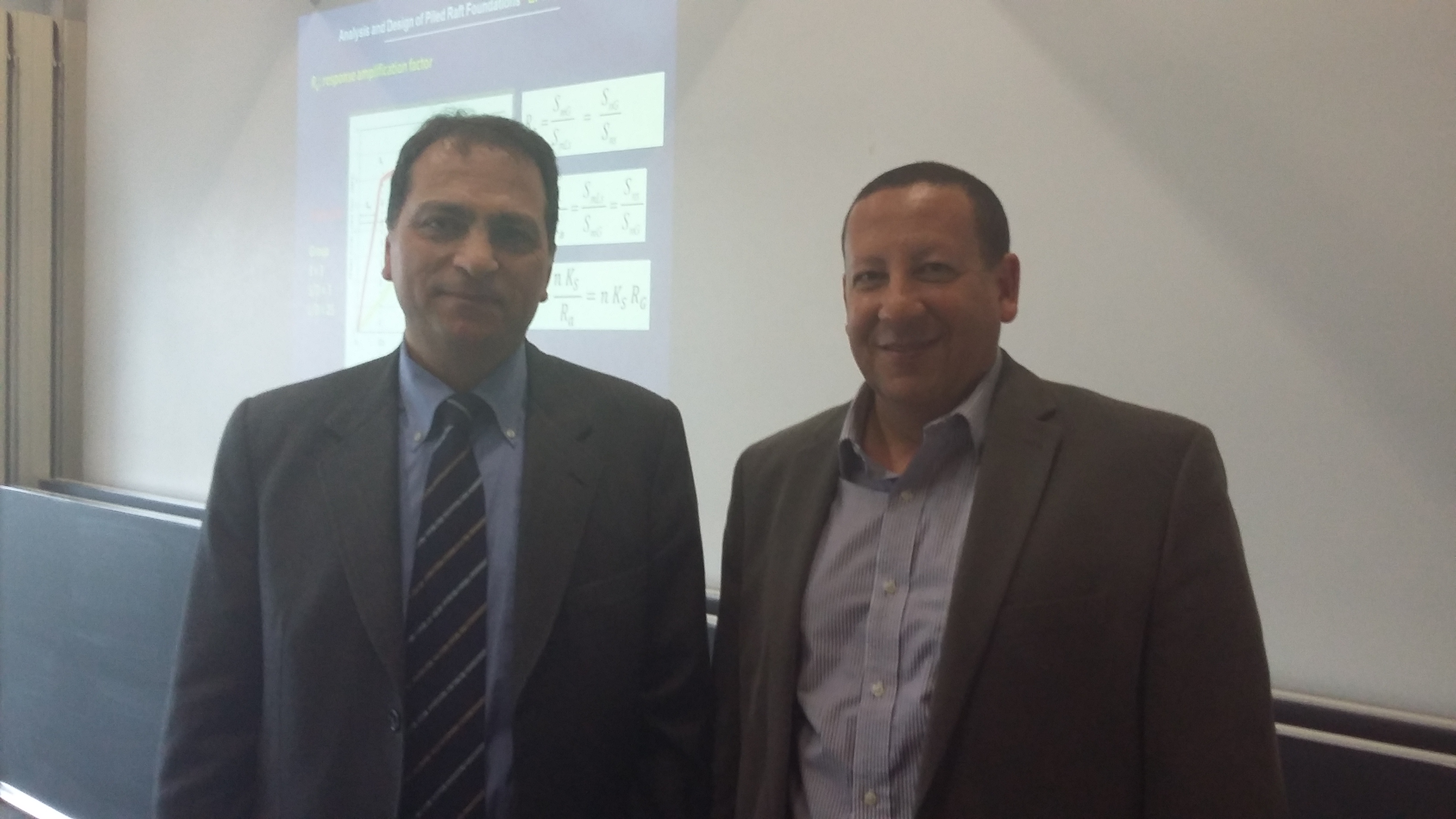04.11.2016
Prof. Comodromos passed by EPFL on November 4th and gave a lecture entitled “Numerical modelling in Mechanised Tunnelling”.
Abstract
The continuous development of mechanized tunneling technology substantially improves its effectiveness for the construction of tunnels in urban areas and as a result Tunnel Boring Machines (TBMs) combined with the earth pressure balanced (EPB) shield have been extensively used over the last decades for the construction of tunnels in urban areas. The ability of the EPB method in controlling the induced settlements by regulating the pressure applied to the tunnel face, the pressure beside the shield and the pressure of the mortar behind the final lining renders the method the most effective, particularly in urban areas with loose soils and /or adjacent buildings interacting with tunnels’ construction stages. However, the limitation and requirements on soil subsidence and movements of adjacent buildings demonstrated that many questions remain for the scientific community to resolve regarding the application of the method and the adjustment of various parameters (applied pressures, construction phases, etc.) affecting induced ground movements. The experience gained from the comparison of predictions and observed behavior during tunnelling process demonstrated that an appropriate, safe and cost effective design of a tunnel in urban environment requires reliable computational methods for the prediction of ground movements and induced displacements to adjacent structures, as well as stress relaxation and stress concentration in the vicinity of the tunnel and in final lining, respectively. The first attempts to simulate EPB shield tunnelling were rather simplified and limited to two-dimensional (2D) numerical analysis while in the first efforts of 3D analysis the interaction between the TBM, the grouting behind the shield and the lining was disregarded and the effects were taken into account by considering distributed forces at the circumference of the excavation. Nowadays, the development and continuous advances in numerical methods and computer engineering have provides the capability of multi-stage 3D numerical process taking into account almost all relevant components of shield tunnelling. A case study from the ongoing Thessaloniki subway is presented, addressing the above topics and the assessment of the potential ground and adjacent buildings response.
04.03.2016
Prof. Comodromos passed by EPFL on March 4th and gave a lecture entitled “Analysis and design of piled raft foundations allowing for pile-soil-raft interaction effects”.

Biography